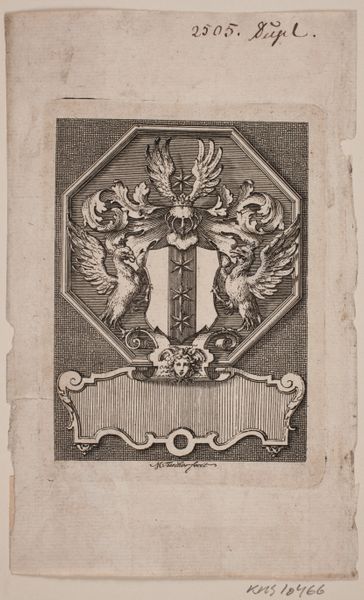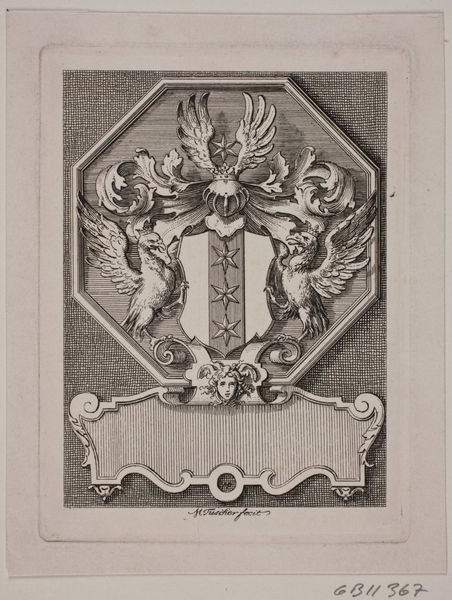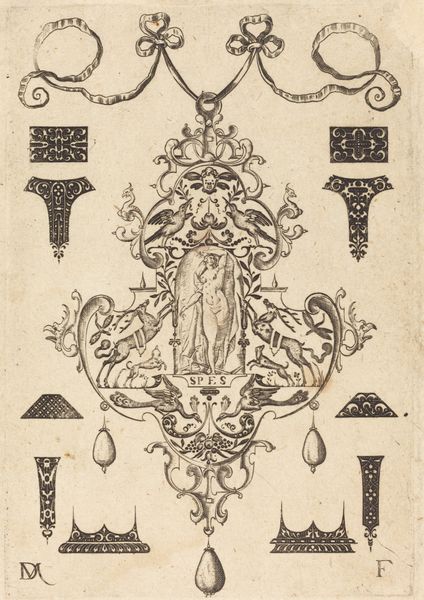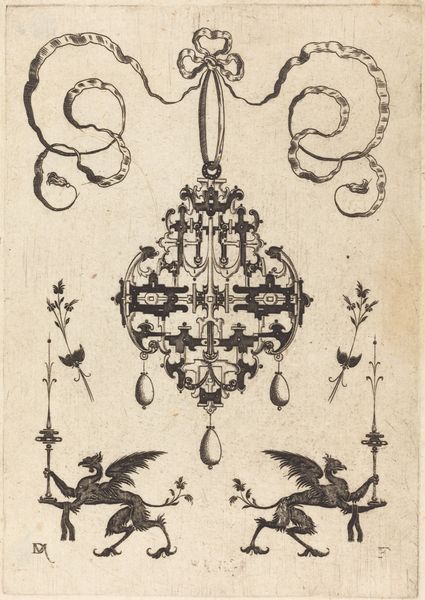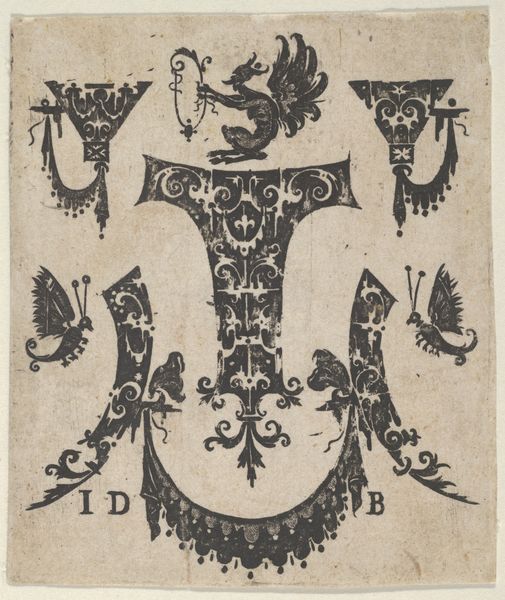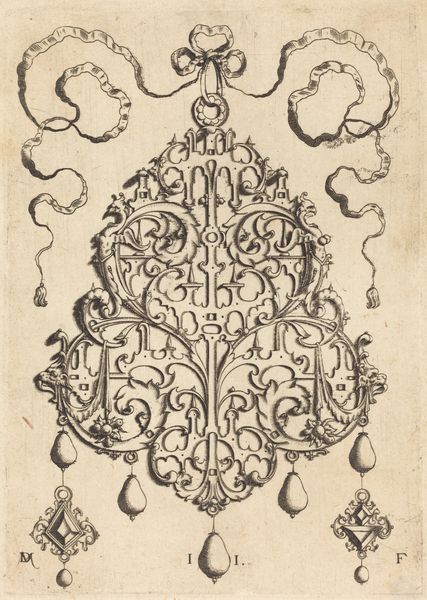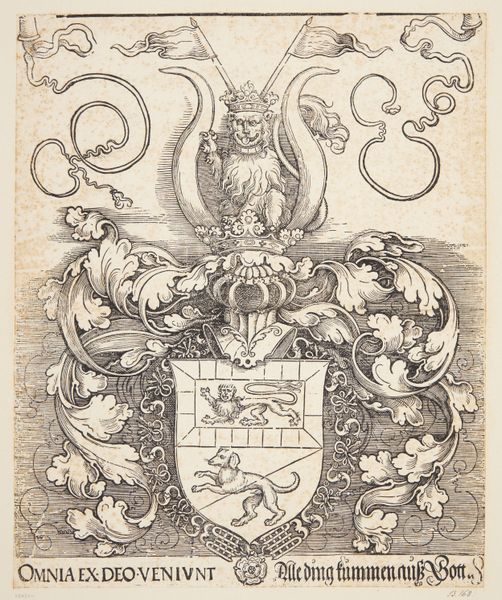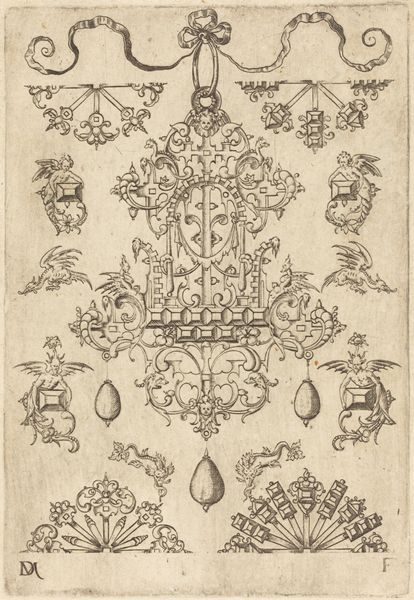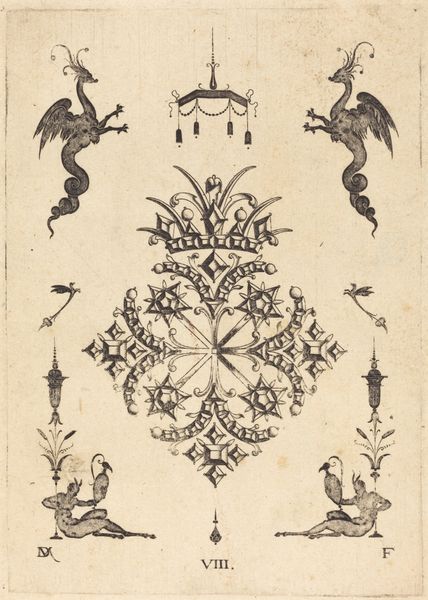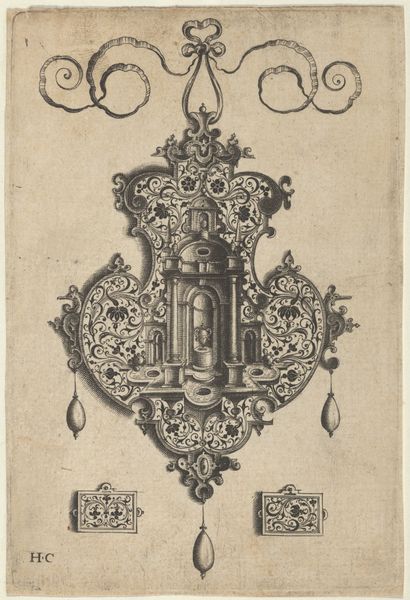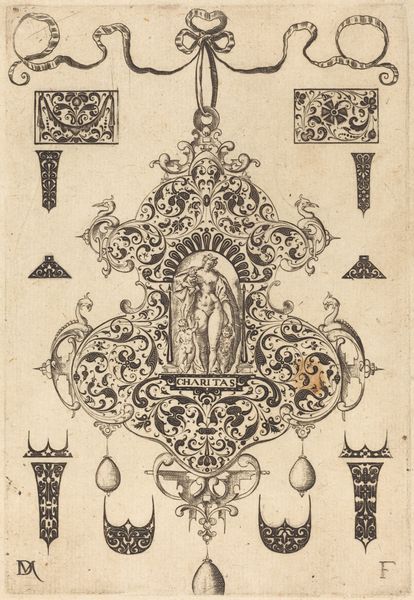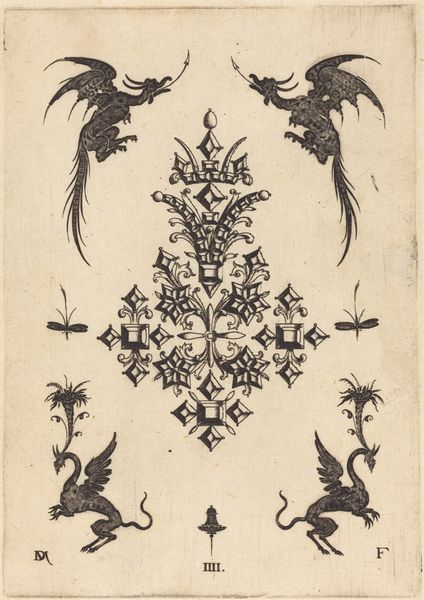
graphic-art, print, engraving
#
graphic-art
#
baroque
# print
#
etching
#
engraving
Dimensions: 102 mm (height) x 75 mm (width) (plademaal)
Curator: Immediately, I see precision and intricacy, the lines defining the creatures, stars and foliage are impressively precise. There is almost a sense of organized chaos here. Editor: Yes, and this is Hjelmstjernes ekslibris by Marcus Tuscher, created sometime between 1725 and 1749. It's a marvelous example of baroque graphic art. Curator: Baroque, undoubtedly, look at the extravagance of detail. Could you tell us more about the significance of bookplates, or ex libris, like this one? Editor: Of course. Ex libris were personalized bookplates used to indicate ownership. They were small works of art in themselves, reflecting the owner's interests, status, and affiliations. This piece likely belonged to someone named Hjelmstjerne, denoted in the inscription area at the bottom. Curator: Note the central shield, bearing what looks like a vertical row of three six-pointed stars between griffins. The lines of the creatures suggest an allegorical display, representing not just lineage, but the character and power the family aimed to convey. What can we say about this particular visual encoding? Editor: Heraldry, especially during the baroque era, was a potent symbol of identity and power. Tuscher's detailed rendering using etching and engraving highlights that, giving a physical form to this sense of nobility. Also consider the chosen imagery --the griffins themselves representing courage, vigilance, and strength, important social values to exhibit in imagery. Curator: You’re quite right. And those ornate embellishments surrounding the shield, including what appear to be wings at the top, and head beneath a blank placard for personalization... Tuscher paid close attention to the layering and formal dynamics in his mark-making. Editor: And the print medium democratized this kind of expression, making individualized signs like Hjelmstjernes ekslibris accessible for the wealthy literate classes of the era to advertise a persona of status. These graphics helped families construct and control their image through ownership of the arts. Curator: So, by looking at this print, we not only admire Tuscher's skill, but we catch a glimpse of how 18th-century individuals presented themselves. A narrative, meticulously etched into each line. Editor: Precisely. And seeing how history plays out at this miniature scale is rather fascinating.
Comments
No comments
Be the first to comment and join the conversation on the ultimate creative platform.
